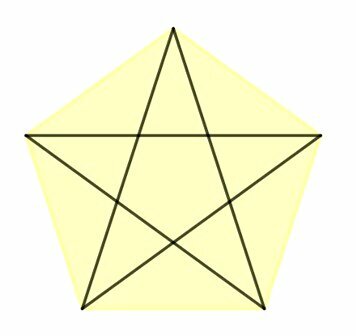angles they are two straight lines that have the same origin, at the apex, and are measured in degree (º) or in radian (rad), according to the International System.
Angle Types
According to their measurements, the angles are classified into acute, straight, obtuse and shallow.
Acute
The acute angle measures less than 90º (
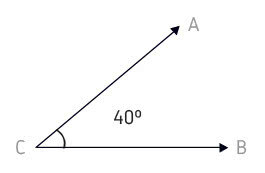
Straight
The right angle measures the same as 90º ( = 90º).
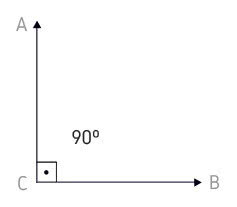
Obtuse
The obtuse angle measures more than 90º and less than 180º (90º >
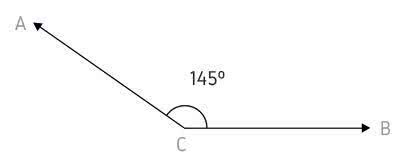
Shallow
The shallow angle, also known as half turn, measures the same as 180º ( = 180º).

How to measure angles?
To measure the angles, we need a protractor, a circle (360º) or semicircle (180º) instrument that is divided into degrees, and follow these steps:
- Place the center of the protractor base over the vertex of the angle.
- Place the point indicating 0° of the protractor on one side of the angle.
- The other side of the angle will point to your measurement.
Angle is the most used unit of measure. Minute and second are your multiples.
It should be noted that 360º is equivalent to 2 π rad. Thus, 180° equals π rad.
Complementary Angles
complementary angles are those that together measure 90º.
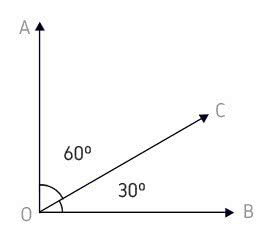
30º + 60º = 90º, which means that the angles complement each other, 30º complements the 60º angle and vice versa.
Supplementary Angles
Supplemental angles are those that together measure 180°.
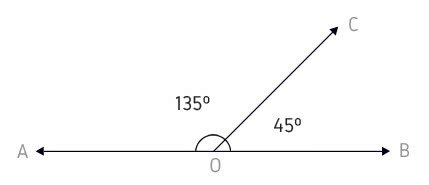
135º + 45º = 180º
This means that the angle of 135º is the supplement of the angle that measures 45º.
At the same time, the 45° angle is the supplement to the 135° angle.
Adjacent Angles
Adjacent angles, which are those that have no common points, can be complementary or supplementary.
The sum of the complementary adjacent angles is 90°.
The sum of the supplementary adjacent angles is 180°.
Compare the difference between adjacent angles with other angles that have common interior points.
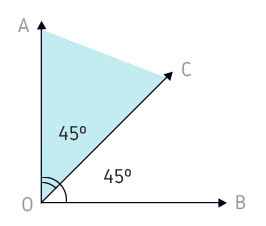
AÔC and AÔB have internal points in common. Therefore, they are not adjacent.
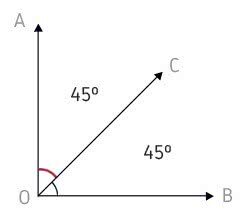
AÔC and CÔB do not have internal points in common. so are complementary adjacent.
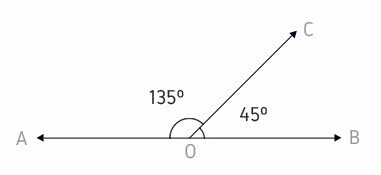
AÔB and AÔC do not have internal points in common. so are supplementary adjacent.
congruent angles
Congruent angles are those that have the same measurement.

Consecutive Angles
Consecutive angles are those that have a side and a vertex in common.
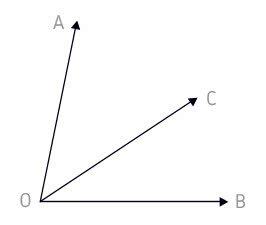
AÔC and CÔB have vertex (O) and side (OC) in common
Opposite Angles by Vertex
Vertex Opposite Angles (OPV) are those whose sides oppose the sides of another angle.
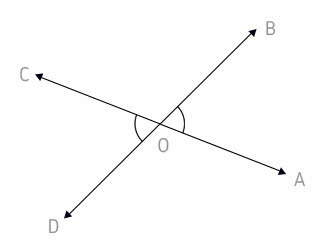
Read too:
- Bisector
- Trigonometry in the Rectangle Triangle
- Parallel Lines
- Competing Lines
- Remarkable Angles
Exercises
1. (MACKENZIE-2014) In the figure below, a and b are parallel lines.

The correct statement about the number that expresses, in degrees, the measure of the angle is:
a) a prime number greater than 23.
b) an odd number.
c) a multiple of 4.
d) a divider of 60.
e) a common multiple between 5 and 7.
Alternative d: a divider of 60.
2. (IFPE-2012). Julia started studying geometry at her school. With doubt in an exercise given by the math teacher, she asked her uncle for help.
The statement was: 'The lines r and s are parallel; the lines u and t, two transversal. Find the angle x value in the figure below'. So the value of x is:

a) 120°
b) 125th
c) 130°
d) 135°
e) 140°
Alternative e: 140°.


